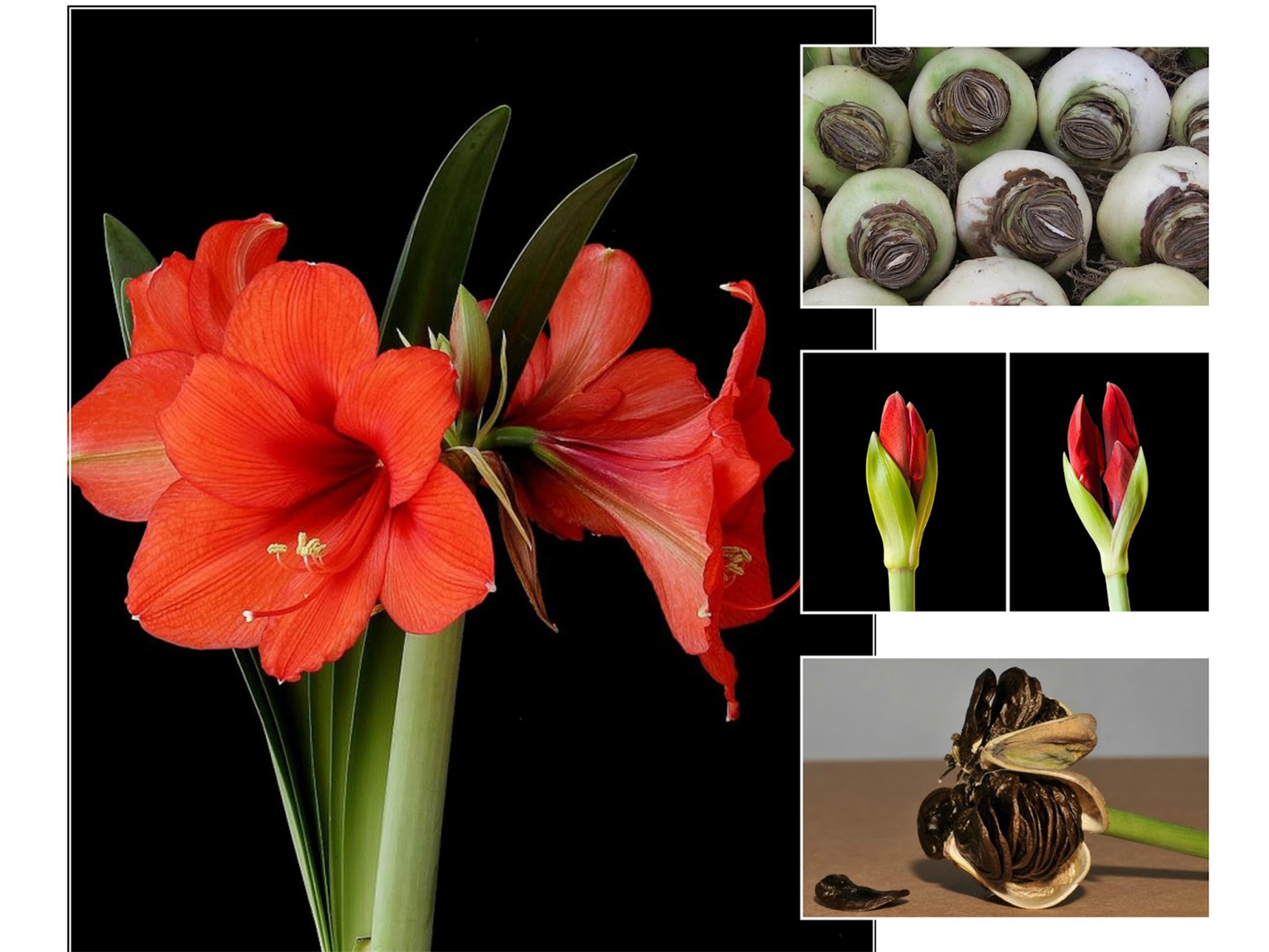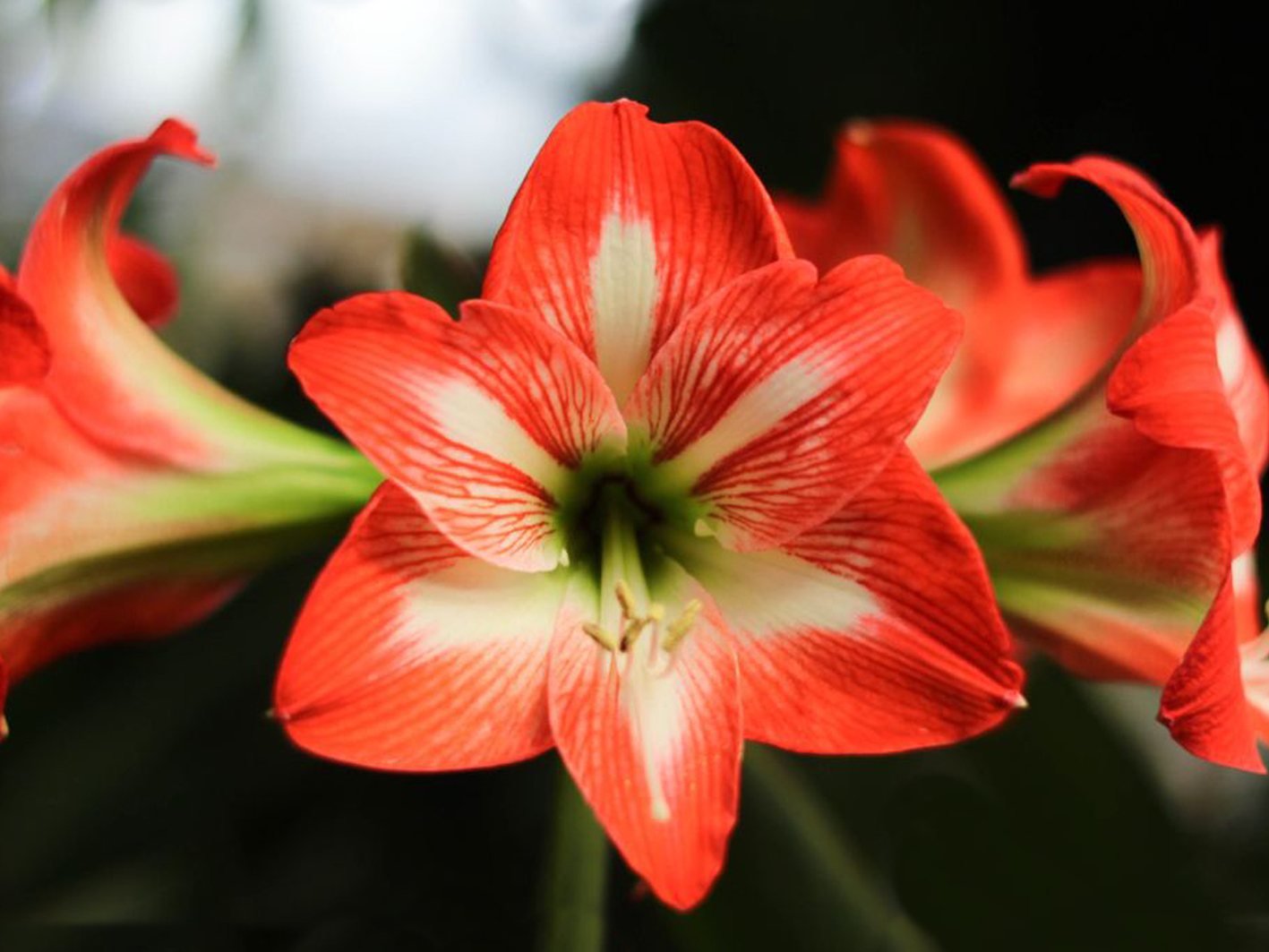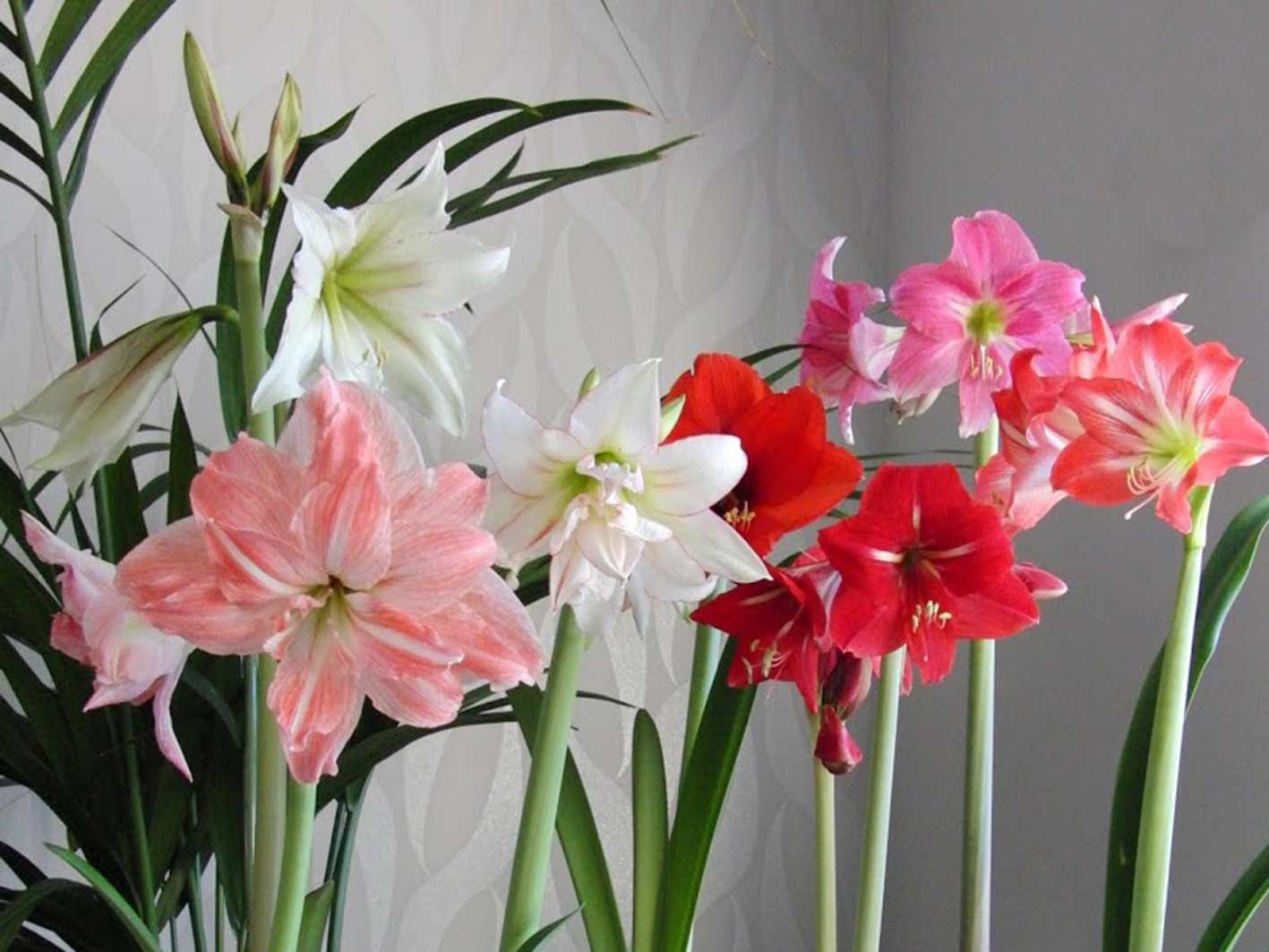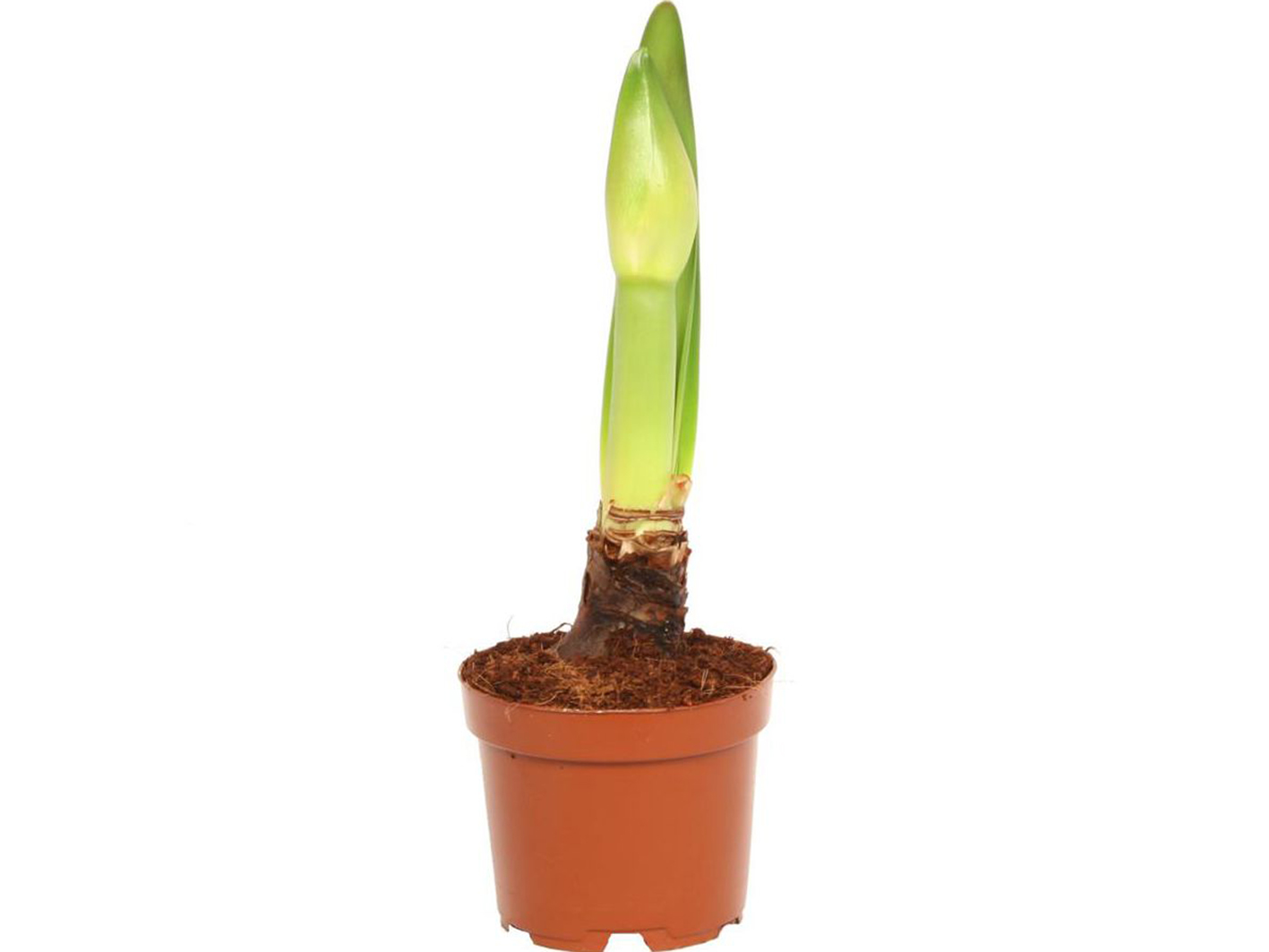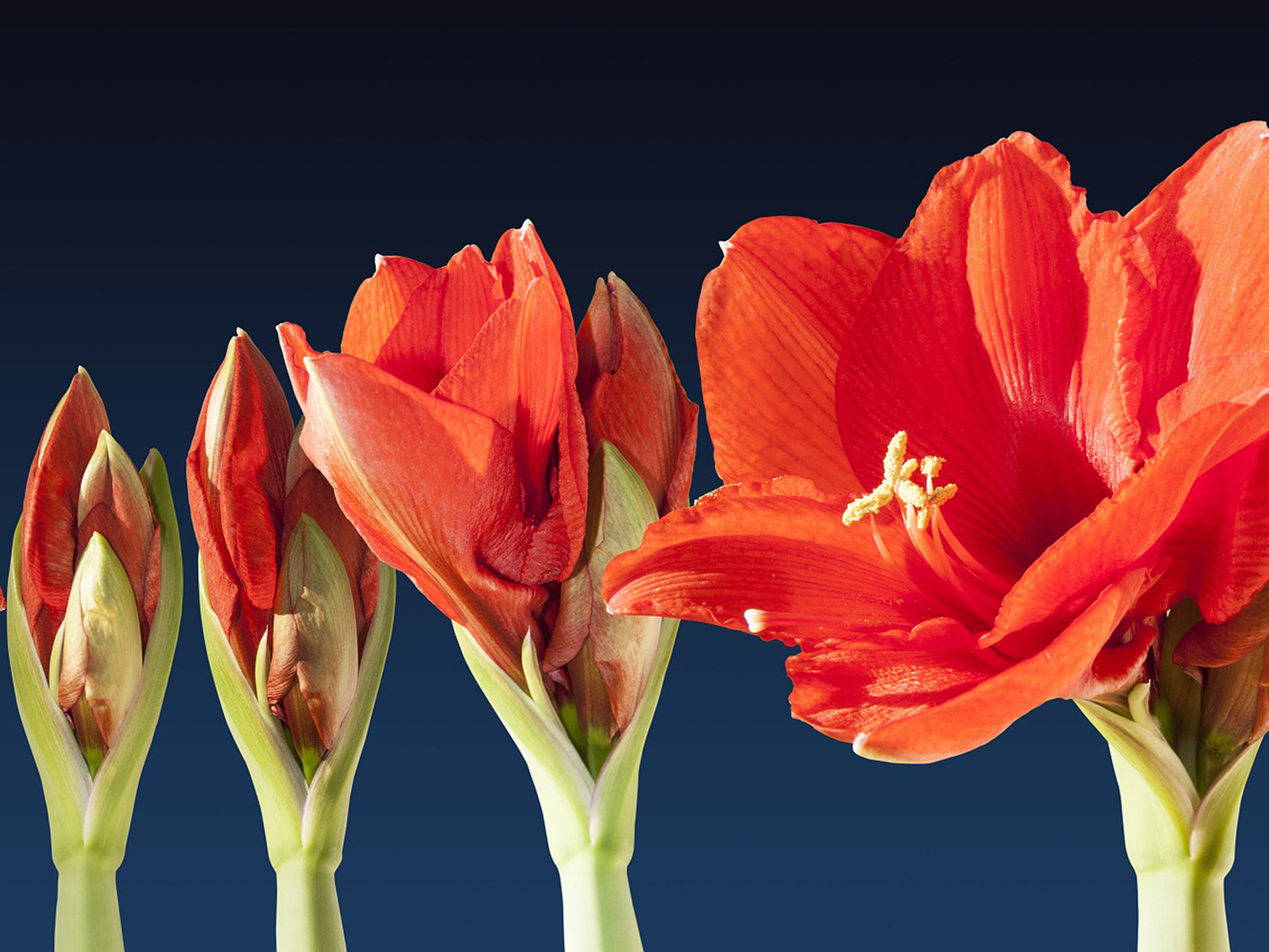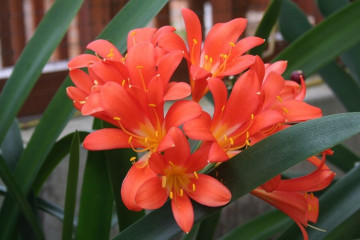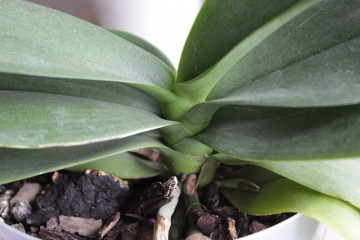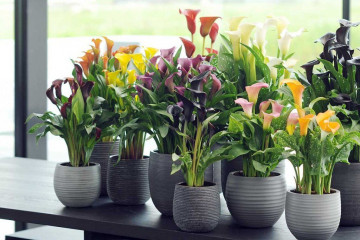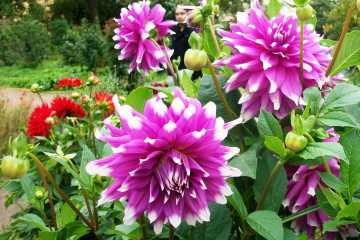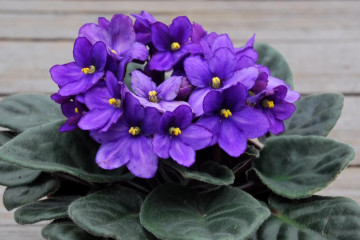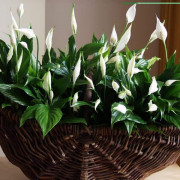Why hippeastrum does not bloom - only leaves grow
Content:
The South American flower hippeastrum is not a new plant for flower growers. He has long taken pride of place in the list of the most common indoor crops. The most decorative are large-flowered varieties - their funnel-shaped flowers sometimes exceed 25 cm in diameter. But not many people manage to admire these beautiful inflorescences. Growth of green mass is often observed under indoor conditions. To understand how to make hippeastrum bloom, you should know the features of its development and the necessary growing conditions.
Features of the flowering period
In winter, the flowering period begins in hippeastrum. Numerous varieties of this plant have the most varied color of inflorescences from snow-white to purple. Some varieties delight with a pleasant aroma.
Hippeastrum blooms spectacularly. The flowers are very large, funnel-shaped with a wavy edge of the petals. Collected in inflorescences of several pieces, which sit on tall flowering tubular arrows. Adult plants with a large bulb can release 2 or even 3 arrows at the same time.
At the very beginning of flowering, special attention should be paid to the watering regime. This plays a decisive role in the successful growth of the arrows and the blooming of flowers. There are a number of important points:
- when the arrows are 6-8 cm high, the plant is watered moderately;
- as the arrows grow, the frequency of watering and the degree of soil moisture increase;
- when the arrow grows to 13-15 cm, the plant is watered with a weak solution of manganese;
- after 5-6 days, mineral phosphorus supplements are used.
During flowering, the flower is handled very carefully. You can not rearrange the pot to another place, as well as expose the plant to sudden changes in temperature. Drafts or exposure to cold air can lead not only to the cessation of growth of the arrow, but also to the fall of the buds.
Why hippeastrum does not bloom, but only releases leaves
In order for the hippeastrum to release the flower arrow, it needs a kind of stress. What for? Only in cramped conditions will the plant direct its forces to the formation of an arrow and buds.
Often, flower growers create excessively comfortable conditions for the hippeastrum - they are planted in a large pot, fed with fertilizers, or watered too often and abundantly. The active growth of leaves is influenced by fertilizing containing nitrogen. As a result of such care, the plant actively builds up its vegetative mass, but refuses to bloom.
If you create the appropriate conditions for the hippeastrum and strictly adhere to the recommendations for watering, fertilizing and planting, the plant will delight you with flowering by spring.
Reasons for the lack of flowering
It is not so easy to achieve flowering of hippeastrum. First of all, you need to pay attention to the factors that can affect the appearance of flowers. They will point out the reason why hippeastrum does not bloom.
Alternating vegetation and dormancy phases
The development of a flower has features - a period of active growth and flowering alternates with a period of rest.Only when the cycle is observed does the plant bloom. For this reason, they create an environment conducive to the smooth transition of the flower from one phase to another.
The dormant period lasts from September to November. Closer to the beginning of this phase, the frequency of watering is reduced and top dressing is stopped. The pot is moved to a cooler and shaded place. Gradually, the growth of the leaves will stop and they will begin to wither and dry out.
At the end of November, the hippeastrum begins to wake up. For this, the pot is placed in a warm and bright place. Watering is gradually increased.
Depth of the bulb
An important role is played by the correct planting of the hippeastrum bulb. The depth of its placement in the ground directly affects the presence or absence of flowers.
When planting the bulb, it is buried only 2/3 of the size, and the rest should be above the soil surface. The soil for planting is used either ready-made, or a mixture of turf, peat and sand in a ratio of 2: 1: 1.
Conditions of detention
Hippeastrum can bloom only in the most favorable conditions. To do this, you should take into account a number of recommendations that relate to the maintenance of a flower in a room setting.
Lighting
Diffused but intense light is preferred. For the location of the pot, a southwest window would be ideal.
Humidity
The optimum moisture content is 70-80%. Spraying on the sheet is not recommended. To increase the humidity level, it is recommended to install pallets with wet pebbles or expanded clay in the immediate vicinity of the pot. An ideal option is a humidifier.
Watering
In different periods of development, the abundance and frequency of watering is different. In a state of active growth and flowering, the soil is moistened regularly as the soil dries up by 2-3 cm. After flowering, watering is reduced. During the rest period, the soil is moistened no more than 2-3 times.
Temperature
The hippeastrum grows and develops best at temperatures of 20-22 ℃ above zero. In winter, it is reduced to 12-15 ℃.
Soil composition
A nutritious and breathable substrate is used for planting the bulbs. It is purchased in a garden center or prepared from peat, sand and turf at home.
Top dressing
Apply mineral fertilizers at a flower arrow height of 12-15 cm. They re-feed twice during the flowering period with a frequency of 14-16 days. As a fertilizer, it is preferable to use mixtures in which phosphorus and potassium predominate.
Observing all the above recommendations, one can expect that in December, hippeastrum will not only begin to release leaves, but also bloom.
Pot size
The flower has a peculiarity - it grows better in close quarters. Only in a small pot does the bulb release flower arrows. The size of the container for planting should exceed the diameter of the bulb by no more than 1-1.5 cm.
Diseases and pests
Only a healthy plant can grow, let alone bloom. Affected by diseases or pests, the hippeastrum is not able to form an arrow and inflorescences. If the rules for caring for the flower are not followed, the bulb can suffer from powdery mildew and various rot.
The main cause of trouble is over-watering. If the plant is already affected, the bulb is removed from the pot, cleaned of the scales damaged by the disease and processed. Additionally, a transplant is carried out with a complete replacement of soil into a disinfected container.
How to "trick" the hippeastrum and make it bloom
In order to artificially provoke the flowering of hippeastrum, a technique is used, similar to forcing bulbs such as hyacinths and tulips. Actions are performed sequentially:
- From the first months of summer until September, plants are actively watered and fed with fertilizers every 2 weeks.
- In mid-September, the pots of bulbs are moved to a dark, cool place and left alone until the end of November.
- At the indicated time, the plants are placed in a warm place with a temperature of 30-35 ℃. Provide moderate lighting and wait for the arrow to appear.
- When the peduncle hatches, they begin to moisten the soil daily with warm water (30 ℃).
- In December, when the arrows appear, put the pots in a well-lit place and increase watering.
- Further care involves regular soil moistening and top dressing.
Following this scheme, the plant is artificially made to bloom. There are more radical methods, such as exposure to sudden changes in temperature or abrupt cessation of watering. But the described method allows you to achieve flowering without the slightest damage to the flower and is the most humane.
The flowering of the hippeastrum is beautiful. A positive outcome can be hoped only if all recommendations for flower care are followed.
